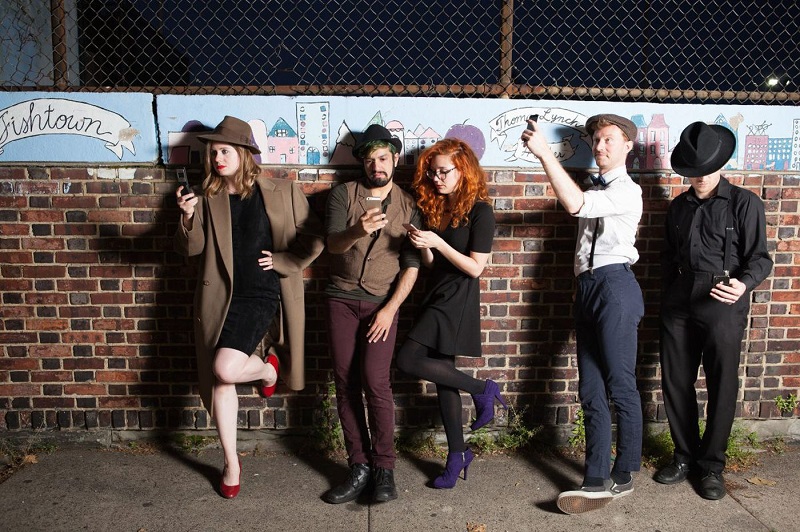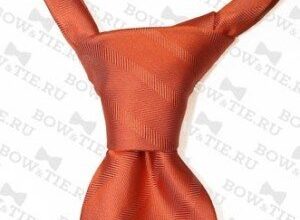In a narrow sense, hipsters are wanderers, dressed in grandmother's jumpers, regulars of fashion parties and art exhibitions. These guys are in every corner of the planet, and it is impossible not to notice them, because they know how to stand out in the crowd, becoming involuntary hostages of their own ideology. Don't be a gray mass, stand out – this point is written down with craft beer in every hipster's contract.
These guys are not doing anything reprehensible, but they often cause hype around them, and not always in the good sense of the word. So what's wrong with these trendy guys and girls? Or maybe something is wrong with all of us?
 A distinctive feature of the hipster is the desire to emphasize the creative nature
A distinctive feature of the hipster is the desire to emphasize the creative nature
The history of the emergence of hipster culture
The hipster subculture originated in America in the late 1940s. 'Echoes of the Second World War' was originally formed as a get-together of young regulars of jazz clubs. These guys tried to live here and now, rejecting the dark past of the war and not wanting to know anything about the future. As in our day, hipsters from that period also tried to look stylish.
This 'barefoot bohemian' tried to be as brilliant as the jazz they listened to. The hipsters of the 1940s absorbed not only the vivid image of musicians, but also their slang, as well as an ironic attitude to life. The word 'hipster' itself originated in the musical environment – to be hip is translated from English as 'to be in the subject' or 'to be fashionable'.
 Hipsters are the descendants of a war-torn generation without 'yesterday', 'today' and 'tomorrow'
Hipsters are the descendants of a war-torn generation without 'yesterday', 'today' and 'tomorrow'
As in our days, the guys were well versed in new and fashionable musical directions, cinema, literature, and everything that at least remotely related to the bohemian lifestyle. Physical work was considered the lot of those who were unable to think, read, and learn.
However, already in the 1960s, when a whole wave of new youth movements swept across America and Europe, the peace-loving hipsters were temporarily forgotten.
Who are modern hipsters
At the beginning of the 2000s, stylish guys began to appear on the streets again, preferring exhibitions and clubs to alcohol in the front door and to horizontal bars in the yard. Modern hipsters are a heterogeneous, diverse and multinational culture, many of whose prominent representatives do not themselves consider themselves hipsters.
In the dictionary of the University of Oxford, the word 'hipster' means a person who follows current fashion trends. This is no coincidence, because in the conditions of diversity and multiculturalism, hipsters can be identified precisely by their typical hobbies, appearance and lifestyle.
Modern hipster lifestyle
By 2019, the current has changed not only externally, but also internally. As in the past, modern hipsters prefer higher education, creative professions and anything that can be attributed to the fashion industry. A number of typical accessories, graceful, although not always functional, appeared in the external image: an old-school, 'breathing on incense' camera, glasses, a voluminous scarf and an oversize jumper.
Building a hipster look is vital. The bow is formed not only through clothing, but also through accessories. The style is based on unisex, which is diluted with vintage 'bells and whistles': wide oversized shirts and jumpers, skinny skinny jeans, sneakers, large glasses in plastic frames and hats, for example, knitted hats or hats with brim.
 Bow, selfie, check in – the sequence known to every hipster
Bow, selfie, check in – the sequence known to every hipster
To summarize, the following are typical points in a hipster look:
- general unisex and casual style;
- vintage accessories;
- always having gadgets at hand;
- negligence in hairstyles, but not a complete denial of styling;
- tattoo;
- sneakers or other comfortable shoes for everyday life.
After the next bow is formed, the hipster must take a photo and post it on social networks. At the same time, two birds with one stone are often killed: check in in a fashionable place and a demonstration of a new outfit.
Most hipsters are apolitical. For the representatives of this crowd, external and internal freedom is important, and political activity does not dispose to such a lifestyle. However, formally, the guys can be classified as moderate or conservative liberals. There are exceptions: hipsters are an educated and active social media audience whose potential many political forces would like to put at their service.
Hobbies of modern hipsters
A distinctive feature of the modern hipster is the desire to emphasize his creative nature, even if the nature itself is by no means creative.
Hipsters are not the target audience of creativity for everyone: indie music, vinyl, arthouse, books and lyrics from mainstream authors. These are not easy areas, understanding and discussion of which requires an extensive educational base in related fields: psychology, art, architecture, economics and much more. Therefore, hipsters are usually well-read people who can keep up a conversation on many topics.
 Hipsters prefer relevant and intelligent careers
Hipsters prefer relevant and intelligent careers
A penchant for sophisticated and complex things determines professional activity. As a rule, preference is given to intellectual and relevant professions in the fields of design, media, marketing, media. Hipsters do not have negative emotions about 'working in the fields' such as serving as a waiter or hostess. However, be sure: in this case, the place of work will be chosen trendy cafes or restaurants, which are often visited by bohemians.
The presence of accounts with photos of yourself, food, clothes and travel is an important point in the hipster's self-identification system, as well as modern gadgets: iPhon, iPad, hoverboard, vape and others. Social media and gadgets are a relatively affordable way to smooth the difference between bohemian desires and the often modest capabilities of these people, which is characteristic of the culture of consumption.
The difference between Russian hipsters and classic European
As mentioned above, European, especially American, hipsters, like hippies, are a trend that has formed in the context of military conflicts and general political tension in the world. Young people lived on pain of death from nuclear weapons with the general conservatism of the state, suppressing living thought and free spirit (if they did not benefit the army).
These living conditions shaped the first hipsters – people living to the fullest today because tomorrow may not come. The first European hipsters cannot be described in two words – this is a topic for scientific work. These are the descendants of generations broken by the war, nonconformists and individualists, whose philosophy is to live for today, not attaching importance to either success or failure. However, traces of this generation remained only on the pages of the books of Burroughs and Kerouac.
 The creation of the flow was based on an idea, today this idea is no longer there
The creation of the flow was based on an idea, today this idea is no longer there
Contemporary Russian hipsters are a different kind of audience. The approach to life here and now has been preserved, but the idea has disappeared. The modern hipster is a representative of bohemia or near-bohemia, who prefers to stand out from the crowd. This is the current youth subculture of snobs, who appoint idols from the world of the elite – artists, representatives of fashion houses and musical trends – and then act under their influence.
Criticism of hipsters and their impact on culture
Do these guys find understanding in society? No, especially on the part of the older generation, which considers them to be consumers incapable of honest work. According to a 2013 Public Policy Polling, Americans don't like hipsters. Moreover, about 25% of respondents supported the introduction of a tax on such a lifestyle.
In Russia, hipsters do not find understanding either. Because of this, some concepts today take on a 'hipster' feel by default. For example, if vegetarians used to be considered just strange guys, now when you say 'I am a vegan' I immediately want to ask 'maybe you also have a vape with a gyro scooter?'
 Bearded men are everywhere now
Bearded men are everywhere now
The same applies to the beard. The situation is absurd and looks like this: at some point, hipsters decided that they needed to wear a beard. How to describe it differently? Since then, it has become uncomfortable to be the bearer of thick facial hair. Bearded men are now not only in the mirror, but everywhere: on the streets, in cafes, on YouTube and even on TV.
Don't hang labels, because hipsters are about you too
Upon closer acquaintance, it becomes obvious that hipsters are another manifestation of the consumer society. And from this point of view, we are all a little hipster in one way or another. Everyone has heard the word 'hipster', knows at least something about them, and maybe someone is a hipster and is, perhaps, without knowing it. Do you wear a beard? Don't eat meat? And why aren't you a hipster? And this is the essence of this trend.
On the one hand, hipsters are rarely 'producers', and the disappearance of this culture will be largely unnoticed by society. On the other hand, their pursuit of education and creativity is admirable and respected.









